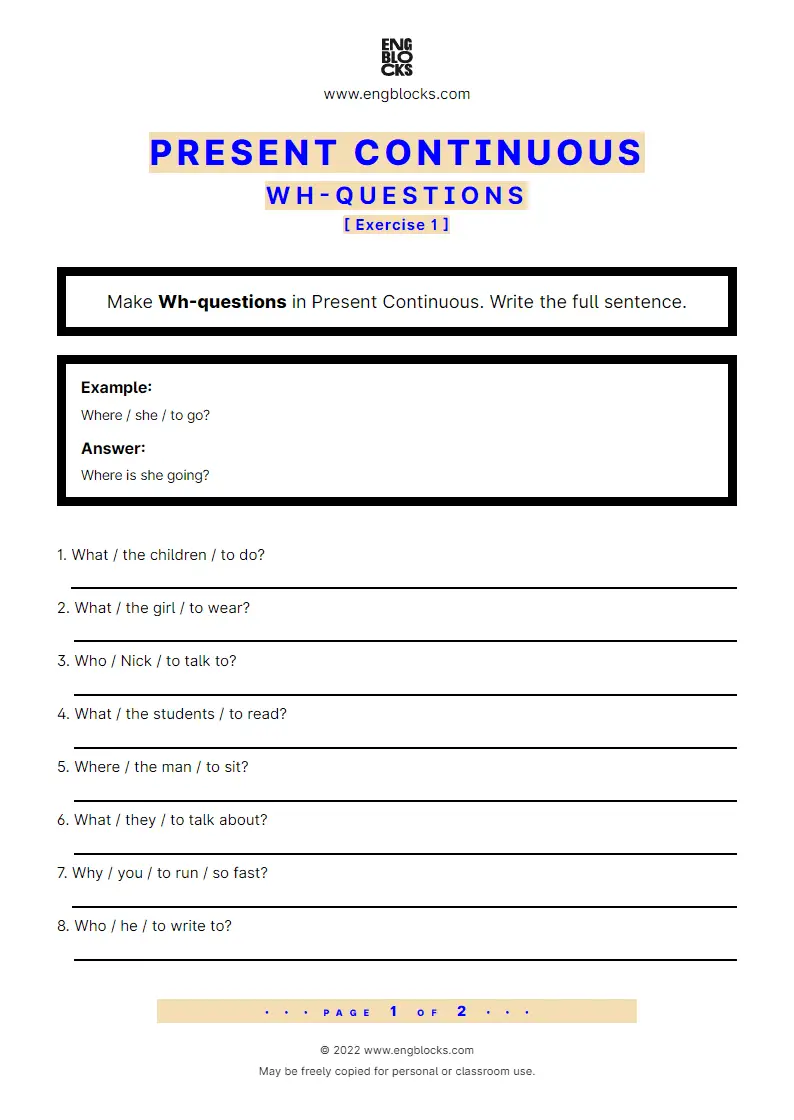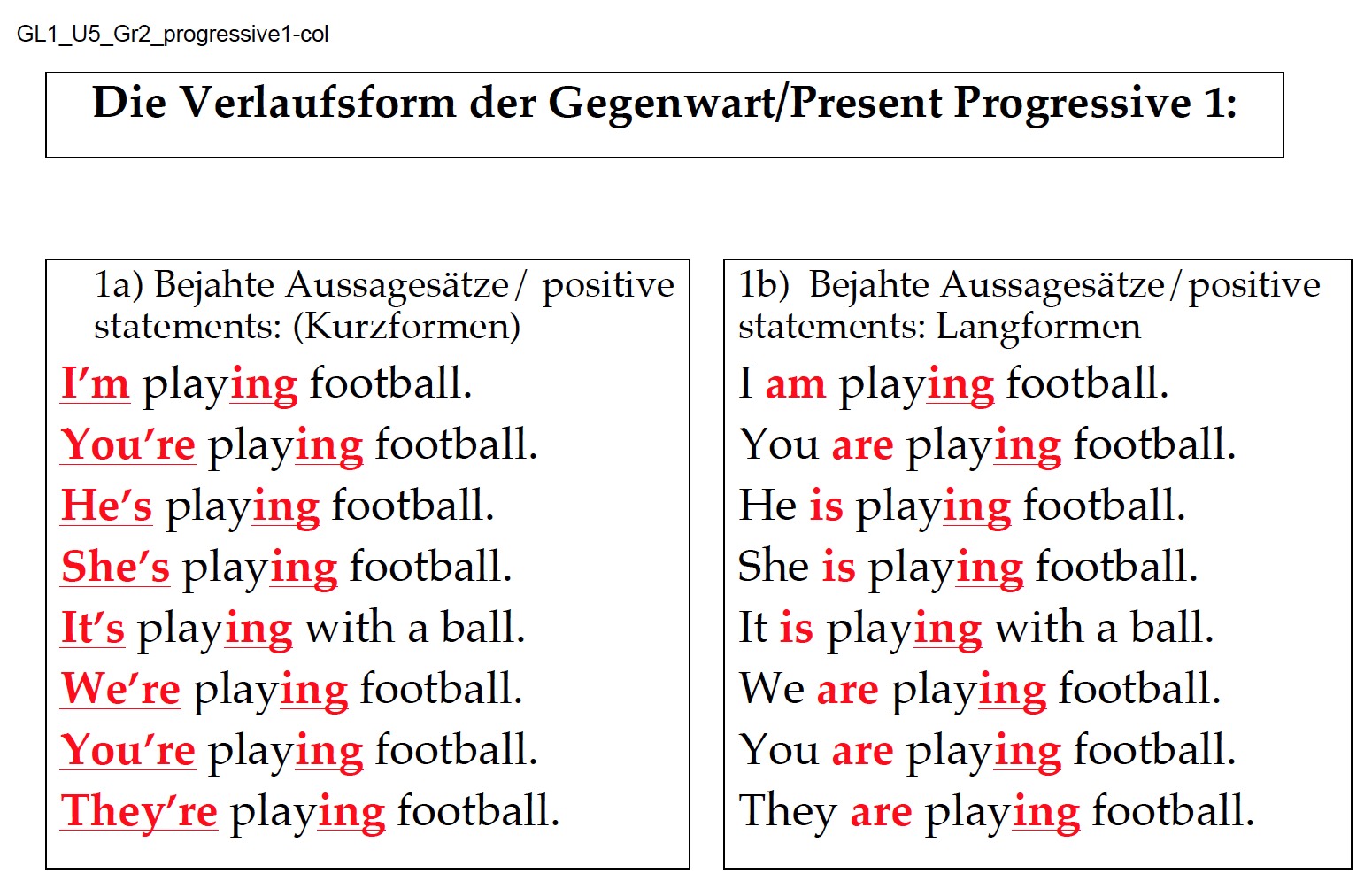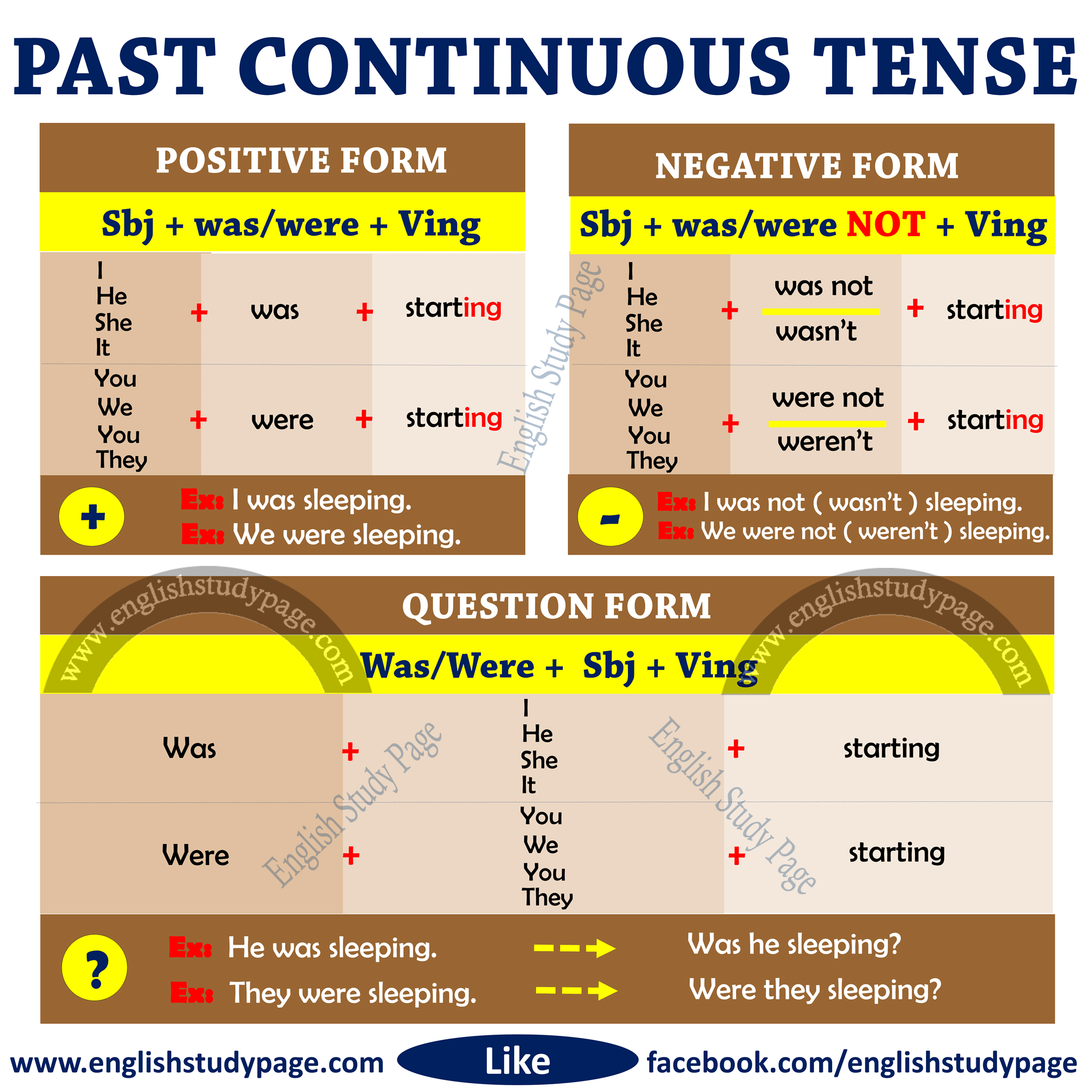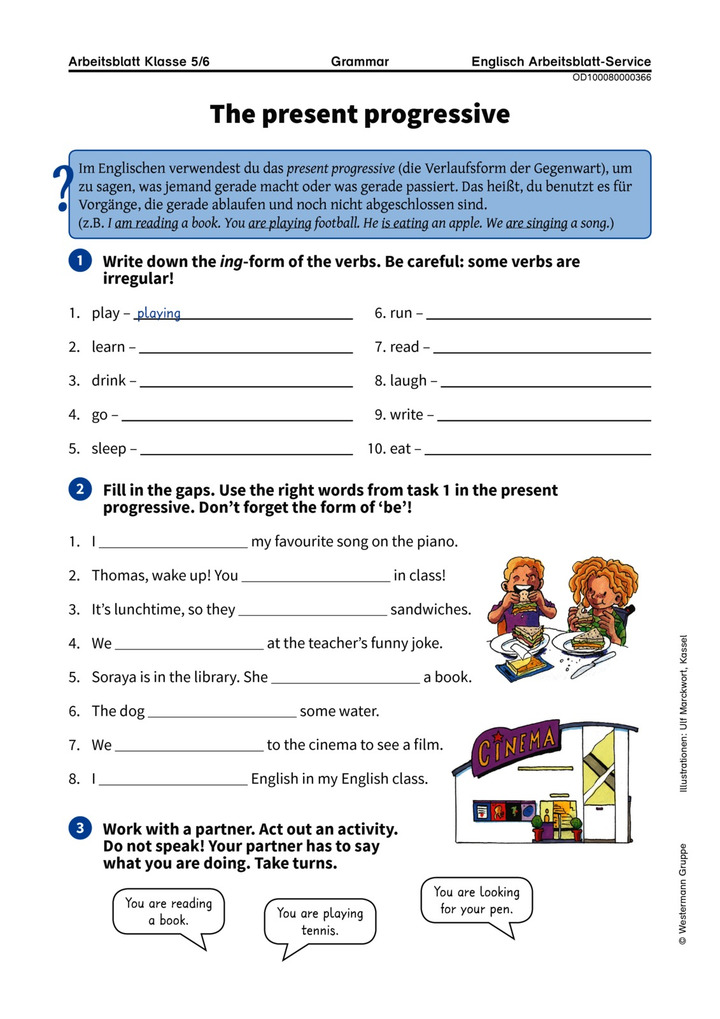
Which tense is it? Grammar quiz activity mixed tenses Unterrichtsmaterial im Fach Englisch
Study with Quizlet and memorize flashcards containing terms like They to the park. (to run), His mum photos. (to take), We frisbee. (to play) and more.

Present Perfect Progressive Übungen + Lösungen meinUnterricht
Present Progressive Tense Examples: We are cleaning the garage on Sunday. Note: simply add "-ing" to the end of a verb that ends in a consonant that does not have a short vowel sound. He is running the race well. Note: Most verbs that end in short vowel sounds will require an extra consonant before adding "ing".

Present Continuous Whquestion Exercise 1 Worksheet English Grammar
Progressive tense is a category of verb tense used to describe ongoing actions. The progressive tenses are the past progressive tense, the present progressive tense, and the future progressive tense. The progressive tenses are sometimes called the "continuing" or "continuous" tenses.

Pin auf Englisch Sekundarstufe Unterrichtsmaterialien
The present progressive tense is formed like this: "am," "is," or "are" + [present participle (" verb -ing")] Choose "am," "is," or "are" based on the following table: For example: She is running. I am talking. Forming the Present Participle The [verb] + "ing" part is known as a present participle. It is formed like this: Add "ing" to most verbs:

present progressive Verlaufsform der Gegenwart Erklärungen Englisch München / Englisch für
The present progressive (continuous) is formed using am, is or are together with the ing (present participle) form of the verb. Contractions in the Present Progressive (Continuous) In general we contract (or shorten) the subject (the person or thing doing the action), and form of be: I am > I'm - I'm going to the store in about ten minutes.

Present Perfect Sketchnote Übersicht Unterrichtsmaterial im Fach Englisch in 2020 Lernen
Present Progressive Tense Negative Sentence Examples. Combining the negative forms of the present progressive verb, such as am not, is not, or are not, with the ing form of the verb creates the negative present progressive tense (the present participle). 1. He isn't standing at his post. (stand + ing = standing) 2. They aren't telling the.

GL1_U5_Gr2a_Present Progressive Bruce Engel
2. Present continuous: how to construct it. The present continuous of any verb is composed of two parts - the present tense of the verb to be + the present participle of the main verb. (The form of the present participle is: base+ing, e.g. talking, playing, moving, smiling) Affirmative. Subject. + to be. + base+ ing.

Luxus Present Perfect übungen
The present progressive is used to describe an activity currently in progress. For example, "I am reading right now." Notice this construction is distinct from the simple present ("I read"), the present perfect ("I have read"), and the present perfect progressive ("I have been reading").

ENGLISH ON LINE 9° ACTIONS 1 NO PROJECT
1. Für Dinge die im Moment, also gerade jetzt geschehen. 2. Bei Bildbeschreibungen wird immer das Present Progressive verwendet Wie bildet mal positive Aussagen? am/are/is + Verb + ing I am dancing. She is dancing. We are dancing. Wie bildet man negative Sätze? am not /are not/is not + Verb + ing I am not / I'm not dancing.

The Present Progressive Tense Part 1 YouTube
The present continuous in its negative form is used to denies that something is happening now. You can also confirm something in Affirmative form and ask something in Interrogative form. If you want to speak about something that often repeats or happens all the time, you can use the present simple. At A2 level, you can learn more about present.

Present Perfect Progressive Grammar & Verb Tenses YouTube
The present progressive, also known as the present continuous tense, is formed with the verb be and the present participle or -ing form of the main verb. We use this tense to talk about actions that are in progress at the time of speaking and temporary actions. We can also use the present progressive to talk about future arrangements and plans.

Pin en Englisch Sekundarstufe Unterrichtsmaterialien
These are negative sentences with the present progressive with each one of the pronouns in English. I am not doing anything wrong. I am not making lunch for you. He is not running every day. He is not watching Anime. She is not coming today. She is not leaving. We are not doing anything illegal.

Present Progressive Tense Englische Grammatik Handout Docsity (mit Bildern) Englisch
1. Bildung: 1.1 Aussagesatz: am / is / are + ing I am He / she / it is (not) playing. We / you / they are 1.2 Frage: am / is / are am Satzanfang Am I Is he / she / it (not) playing? Are we / you / they 1.3 Regeln für die Schreibung der ing-Form: 1. einfaches (!) -e am Wortende fällt weg: 2. Konsonant nach kurzem (!), betontem (!!)

Pin auf Englisch Grundschule Unterrichtsmaterialien
To form the present perfect progressive (continuous), has or have + been + verbing (present participle). Present Perfect Simple or Present Perfect Progressive (Continuous) - Which to use? In general, use the present perfect simple when the action started in the past and is relevant to the present. Ex. This is the third time I've written to you.

Present Continuous / Present Progressive
Present Progressive Use of the Present Progressive. The Present Progressive is also called present continuous. It is used to indicate actions happening at the time of speaking or used for planned future actions. Key words: look, listen, now, at the moment, still, at present . How to form the Present Progressive. I am + verb + ing - I am playing.

The present progressive Westermann
The present progressive is formed with a present-tense conjugation of the verb to be ( am, is, are) followed by the present participle of the main verb. The present participle is simply the verb plus the ending -ing: tryi ng, lift ing, study ing. For verbs that end in -e, we remove the e and add -ing: hike > hiking, ride > riding.